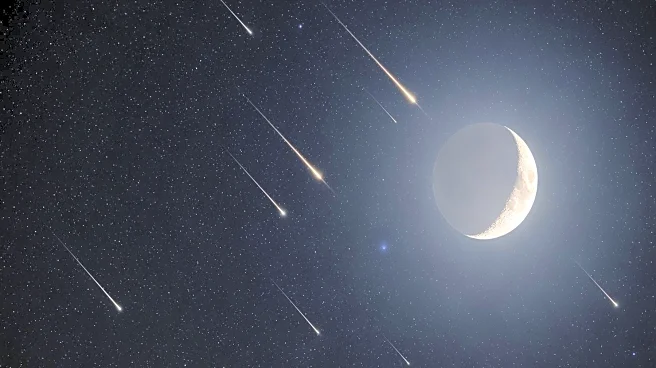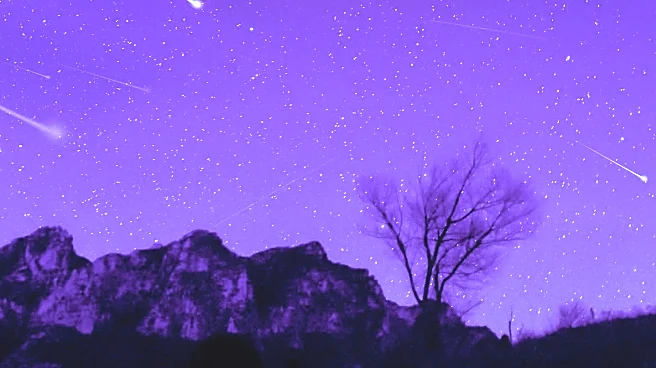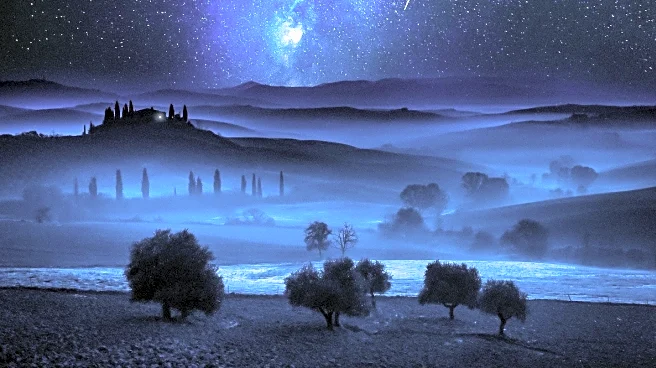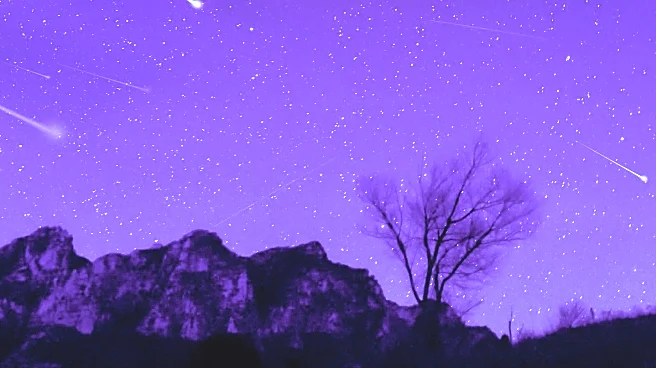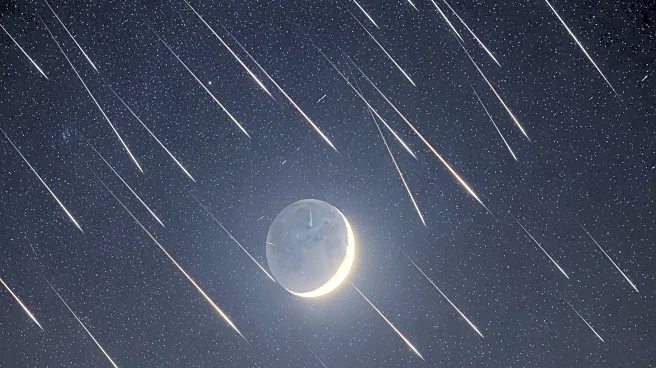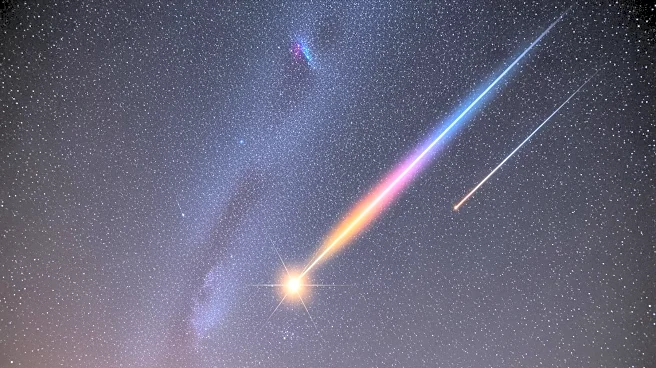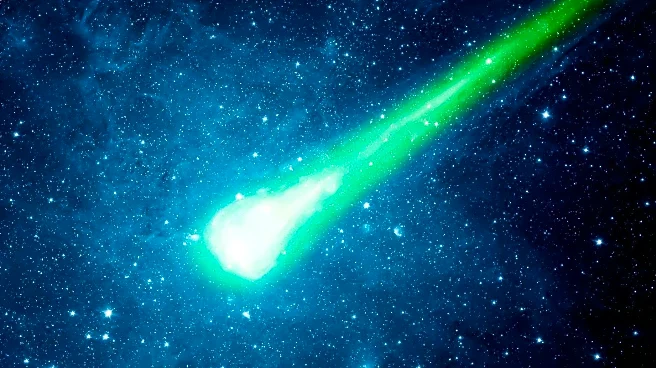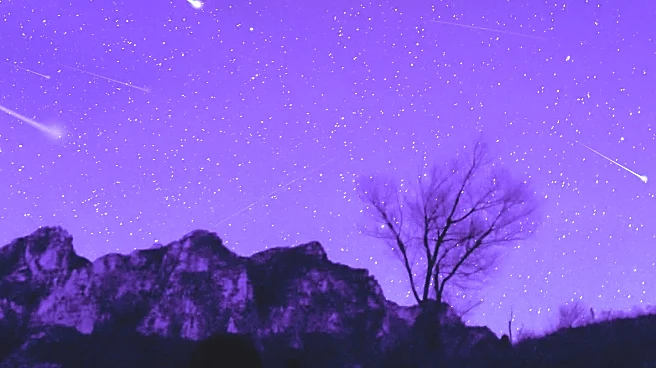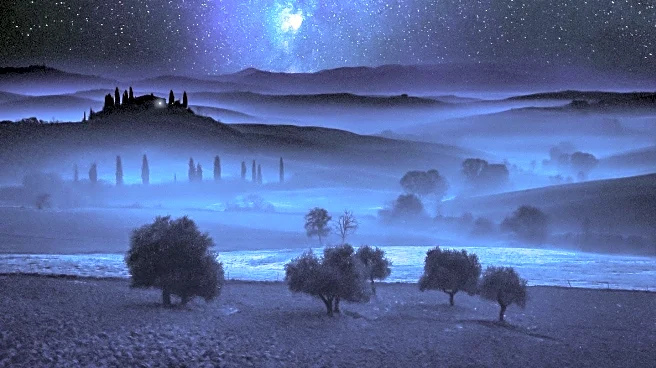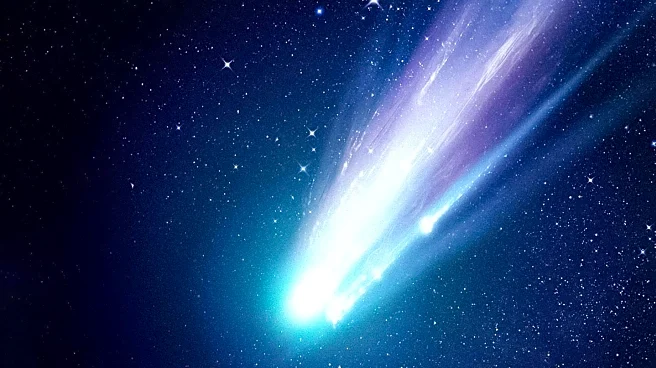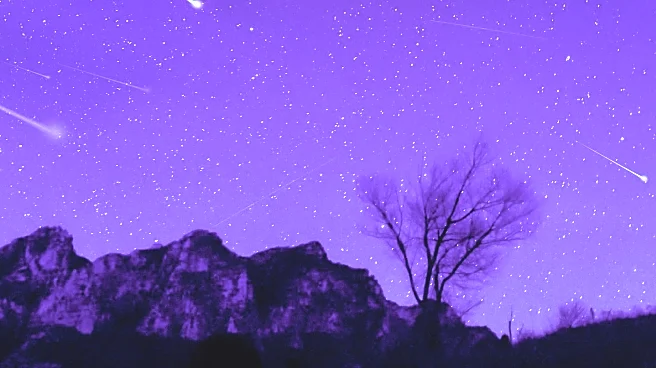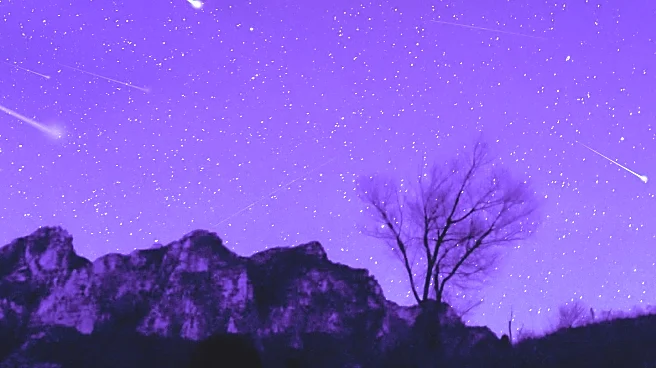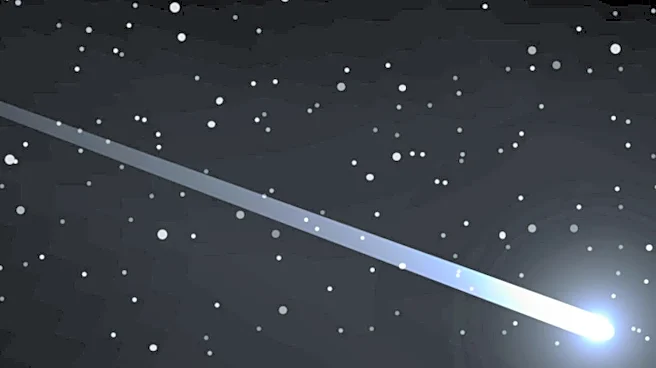What's Happening?
The Orionid meteor shower, originating from debris left by Halley's comet, is set to peak with the arrival of a new moon, providing ideal conditions for viewing shooting stars. According to Thaddeus LaCoursiere, planetarium program coordinator at the Bell
Museum in St. Paul, Minnesota, observers can expect to see up to 20 meteors per hour during the peak on Tuesday morning. The shower will continue to be visible until November 7. Halley's comet, which passes near Earth every 75 years, leaves behind debris that causes two major meteor showers annually. The Orionids are known for sometimes leaving bright, lingering streaks in the sky, known as trains. Viewing conditions are best when there is minimal interference from moonlight and artificial lights, typically after midnight or in the early pre-dawn hours.
Why It's Important?
Meteor showers like the Orionids offer a unique opportunity for the public to engage with astronomy and witness celestial events without the need for specialized equipment. This event highlights the ongoing influence of Halley's comet, a significant astronomical object that has been observed for centuries. The Orionid meteor shower provides educational opportunities for schools and planetariums to discuss the nature of comets and their impact on Earth's atmosphere. Additionally, such events can inspire interest in space exploration and science, potentially influencing future generations to pursue careers in these fields. The visibility of the Orionids also underscores the importance of preserving dark skies, free from light pollution, to ensure continued access to natural astronomical phenomena.
What's Next?
Following the Orionid meteor shower, the next major meteor event will be the Southern Taurids, expected to peak on November 5. This shower will coincide with a full moon, which may affect visibility due to increased moonlight. Observers are encouraged to find locations away from city lights to maximize their viewing experience. Planetariums and astronomy clubs may organize events or viewing parties to educate the public about these celestial occurrences. As meteor showers continue to occur throughout the year, they provide ongoing opportunities for public engagement with astronomy and the natural world.
Beyond the Headlines
Meteor showers like the Orionids can serve as a reminder of the interconnectedness of celestial bodies and the dynamic nature of our solar system. They offer a chance to reflect on the historical significance of comets like Halley's, which have been observed and recorded by various cultures throughout history. The study of meteor showers also contributes to our understanding of the composition and behavior of comets, aiding scientific research in planetary science and astronomy. Furthermore, these events can foster a sense of wonder and appreciation for the universe, encouraging individuals to consider the broader implications of space exploration and its potential to expand human knowledge.
